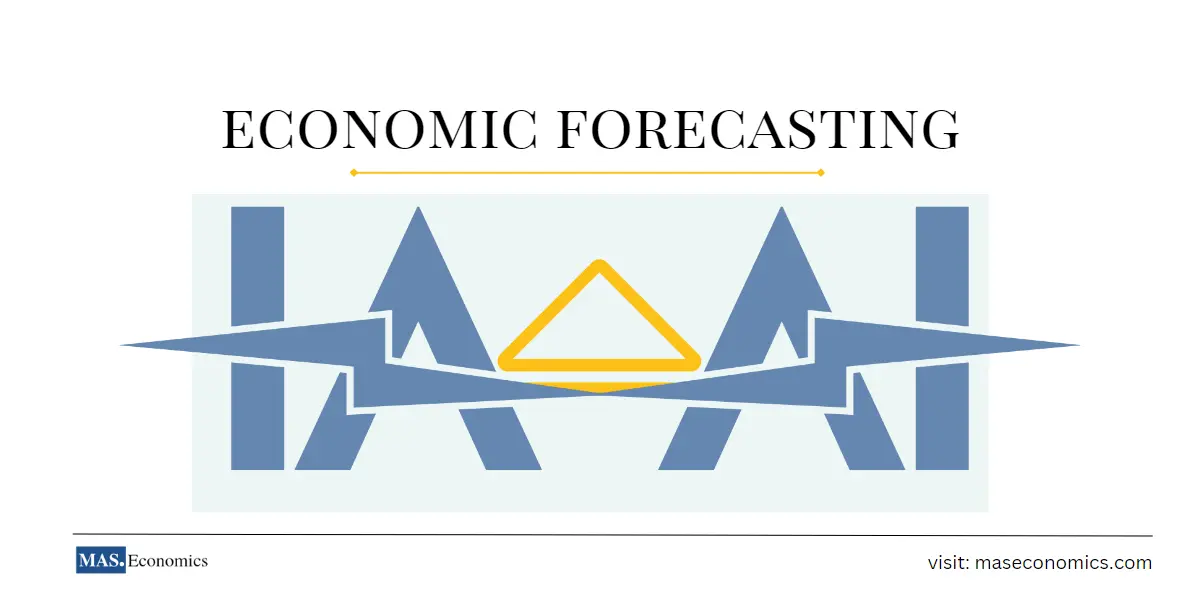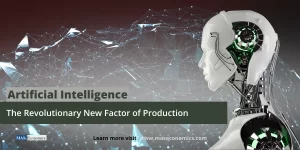Artificial Intelligence (AI) and Machine Learning (ML) have significantly impacted various industries, including finance and economics. These technologies are increasingly used to improve economic forecasting and analysis, resulting in more accurate predictions and better decisions. This article takes a closer look at the growing role of AI and ML in economic forecasting and analysis, exploring topics like big data, predictive analytics, econometrics, and machine learning algorithms. It will also discuss the challenges associated with using AI and ML in this context and the future of these technologies.
Traditional Methods of Forecasting
Traditional methods of economic forecasting and analysis have relied on econometric models. These models use statistical methods and mathematical equations to estimate the correlations between economic variables, such as gross domestic product (GDP), inflation, and unemployment.
However, there are certain limitations to these traditional models as they may not account for more complex relationships between economic variables. Moreover, they require data as well as certain assumptions about the structure of the model, which can affect their adaptability to changing economic conditions.
The use of AI and ML in economics can help overcome these issues and enhance the accuracy of predictions for future trends.
Big Data and Predictive Analytics
Big data is a term used to describe large and complex datasets that are difficult to process and analyze with traditional methods. Significant data sources include government reports, financial statements, and trends from social media. Predictive analytics is a technique used to help identify patterns in this data and predict future outcomes.
The advantages of using big data and predictive analytics for economic analysis are numerous. For instance, it allows for more accurate and timely forecasting of economic trends by quickly recognizing correlations that may not be apparent using traditional methods. Additionally, predictive analytics provide insight into potential economic risks and opportunities, allowing policymakers to make intelligent decisions.
These techniques have been applied in various aspects of economics, such as predicting stock prices, gauging consumer demand, and recognizing economic cycles. They have also proven helpful during the COVID-19 pandemic, aiding policymakers in instigating practical relief efforts or stimulus packages.
Econometrics and Machine Learning Algorithms
Machine learning algorithms have become increasingly popular in recent years due to their powerful ability to process and analyze large datasets. These algorithms are designed to identify meaningful patterns and relationships in data that might not be detected through traditional econometric models, which rely on a priori assumptions about the connection between variables.
Aside from their capacity to handle nonlinear data relationships, machine learning models can be used for numerous economic forecasting and analysis tasks, including stock price prediction, growth estimation, and inflation rate estimation. The algorithms can also be applied to big data sets such as social media and search engine data to gain insight into consumer behavior and economic trends.
Although machine learning algorithms offer many advantages over traditional econometric models, they also have some drawbacks–namely, the need for high-quality training data and difficulties interpreting models. Therefore, they should be used with caution when applied to economic analysis.
Applications of AI and ML in Economic Forecasting
The applications of AI and ML in economic forecasting and analysis are numerous. Here are some examples of how these technologies can be put to use:
- Predicting economic indicators – AI and ML algorithms can pick up patterns from historical data, enabling more accurate predictions of GDP, inflation, and unemployment rates.
- Analyzing financial markets – AI and ML algorithms can sift through financial market data to predict stock prices, exchange rates, and other indicators.
- Risk management – Algorithms can identify possible economic risks, such as recessions or financial crises, and credit and market risks in financial institutions.
- Understanding consumer behavior – AI and ML algorithms can provide insight into customer spending habits and preferences, aiding businesses’ pricing, marketing and product design decisions.
- NLP – Text processing capabilities of AI/ML can be utilized to detect trends within news articles or social media posts, helping assess public opinion around economic issues.
- Optimizing supply chains – These technologies enable the optimization of supply chain operations that reduce costs while improving efficiency at the same time.
Using AI & ML for economic forecasting provides much-needed insights into complex relationships while being mindful of potential limitations like data quality or interpretability.
Challenges and Limitations
Although the use of AI and ML in economic forecasting and analysis can be beneficial, several challenges and limitations must be considered.
Data Quality: The accuracy of AI and ML models heavily depends on the quality of data used to train them. If the data is incomplete, erroneous, or biased, the outcomes may not accurately align with underlying factors between variables.
Interpretability: Unlike econometric models created based on known economic relationships, AI and ML algorithms can identify patterns that are not immediately visible. This makes it hard to understand what drives the predictions or detect possible errors or biases in the model.
Overfitting: If an algorithm is trained with a dataset that is too small or specific, it may end up fitting the noise instead of actual patterns, resulting in inaccurate forecasts and limiting its general applicability to other datasets.
Black Box Models: Certain AI and ML models provide limited explanations regarding how they reach their results; this limits their usage since interpretability can be crucial in specific applications.
Human Bias: If data used to train AI & ML algorithms reflects human bias (either due to decisions made by those creating the data), then these algorithms are likely to perpetuate such bias.
Technology Limitations: Utilizing AI & ML necessitates significant computing resources and expertise; this might limit access for businesses without enough resources.
When using these techniques for economic forecasting & analysis, one must consider potential challenges & limitations. Thinking about these issues thoroughly can help ensure models developed are reliable, uninfluenced by prejudice & valuable for decision-making purposes.
Future Outlook and Implications
The potential future of AI and ML in economic forecasting and analysis is bright, with many opportunities for innovation and improvement. Here are some of the implications and developments to watch out for:
Real-time data will become more prevalent: As real-time data becomes increasingly available, AI and ML algorithms can be used more effectively in economic forecasting and analysis, allowing for more accurate predictions and quicker responses to changes in economic conditions.
Improved interpretability: Research is being conducted on techniques to make AI and ML algorithms easier to interpret; this could raise trust in these models and make them more useful when making decisions.
Advancements in natural language processing: As natural language processing continues to improve, it opens up the possibility of quickly analyzing text data and identifying trends in economic sentiment.
Integration with other technologies: New economic forecasting and analysis opportunities may arise by blending AI & ML, blockchain technology, and IoT (the Internet of Things). For instance, collecting real-time data from IoT devices may lead to better predictions about future financial conditions.
Increased collaboration between academia & industry: Academicians will work closely with businesses & policymakers to develop & apply new kinds of AI & ML techniques for economic forecasting & analysis.
The future of AI & ML within economics is likely to be characterized by increased data availability, improved interpretability & greater collaboration between academia & industry, which should result in better accuracy when predicting economic trends & offer fresh possibilities – both business-wise AND policywise – when it comes time to make informed decisions.
Conclusion
Despite the challenges that must be addressed, the future of AI and ML in economic forecasting and analysis looks promising. As new techniques are developed and integrated with other research areas, we expect increased accuracy and usefulness in economic predictions. Businesses and policymakers should closely follow these advancements, considering the potential benefits and limitations when making decisions about the future.




